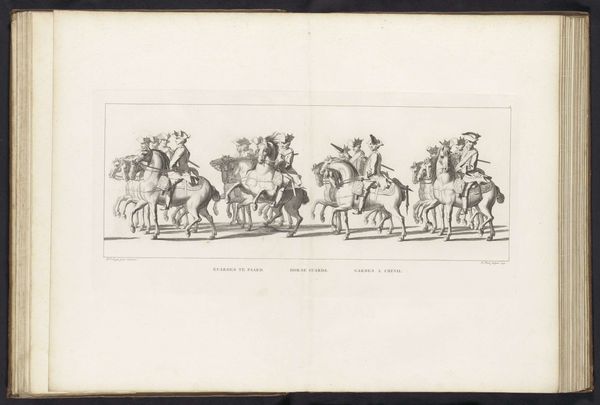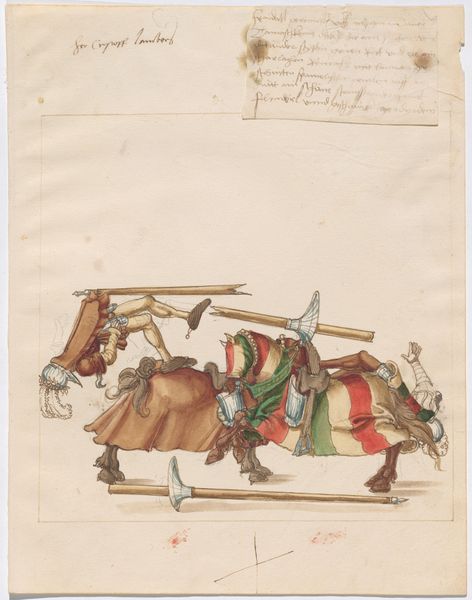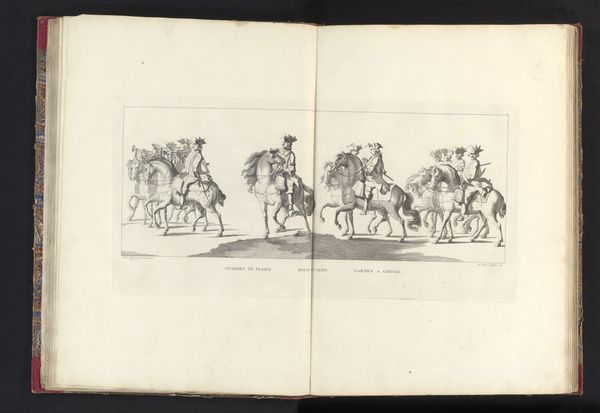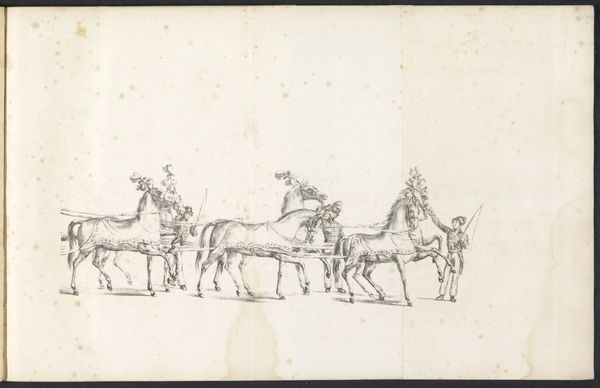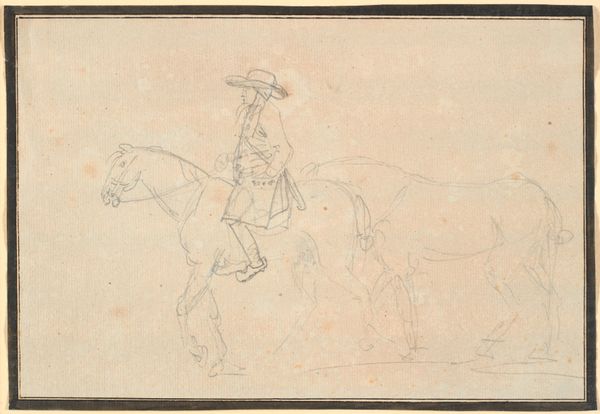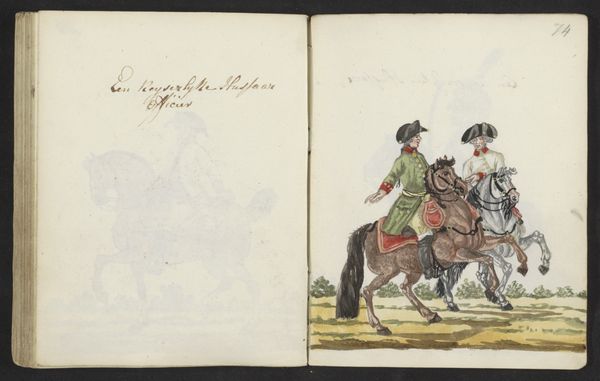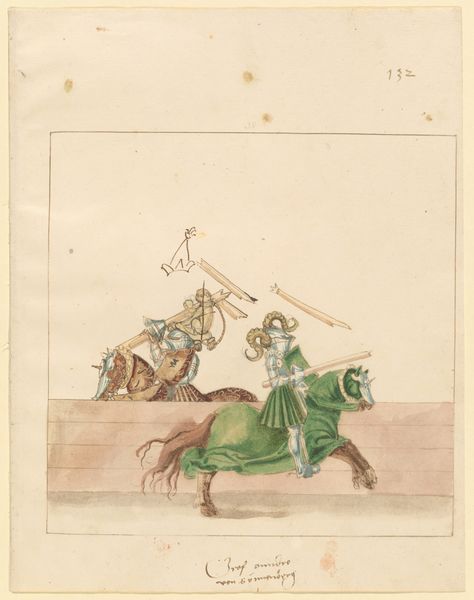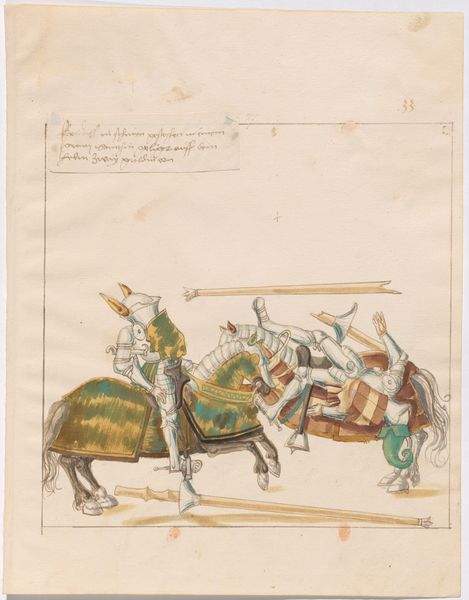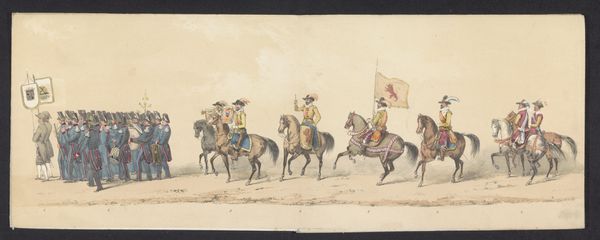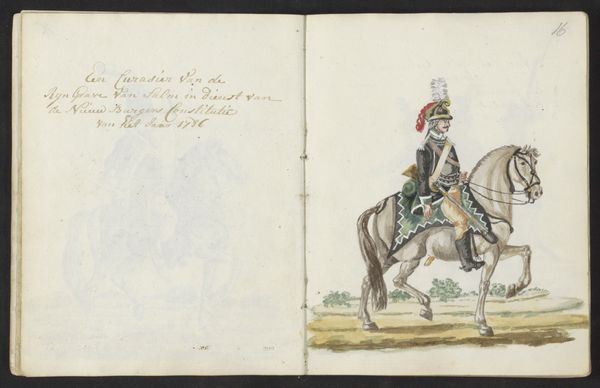
drawing, watercolor, pencil, pen
#
drawing
#
aged paper
#
toned paper
#
sketch book
#
tea stained
#
personal sketchbook
#
watercolor
#
coloured pencil
#
pencil
#
pen
#
watercolour bleed
#
watercolour illustration
#
genre-painting
#
sketchbook art
#
watercolor
Dimensions: height 63 mm, width 161 mm
Copyright: Rijks Museum: Open Domain
Editor: This is "Javaanse cavalerie" – Javanese Cavalry – a drawing made with pencil, pen, watercolour, and coloured pencil, likely between 1779 and 1788, by Jan Brandes. It's rendered on toned paper and presented as a page in a sketchbook. There's a definite colonial gaze to this work. How should we understand this portrayal? Curator: The depiction of Javanese cavalry during that period needs to be examined through the lens of colonialism and representation. This wasn't an objective observation; it's mediated through the artist's cultural and societal position within a colonial structure. What do you observe about the way the figures are presented? Editor: I notice that the figures almost seem like specimens – labeled and categorized, but with a distance and lack of individual personality. The sketch quality reinforces that detached, almost clinical, perspective. Curator: Precisely. Consider the power dynamics inherent in the act of representation. Whose narrative is being prioritized? How does the artist's identity shape our understanding? What’s missing from this picture? Editor: We're missing the voices and perspectives of the Javanese people themselves. Their agency is erased, and they become objects of European observation and documentation. I’m assuming Jan Brandes was Dutch, so how does his cultural context influence what we’re seeing here? Curator: As a member of the Dutch colonial administration or affiliated with it, his artistic practice reinforces the power imbalances. His choices in representation – what details to emphasize, what to omit – actively participated in constructing a particular image of Java for a European audience. How could we engage contemporary theory to analyze it? Editor: Perhaps using postcolonial theory to deconstruct the inherent biases, reveal the power structures at play, and center marginalized voices. We should view it as a product of its time, while recognizing the problematic dynamics it embodies. Curator: Absolutely. Examining these historical artworks critically is essential to confronting the legacies of colonialism and promoting more equitable narratives in art history. Editor: I will remember to seek more of the story next time I look at works from that time. Thanks for this.
Comments
No comments
Be the first to comment and join the conversation on the ultimate creative platform.
